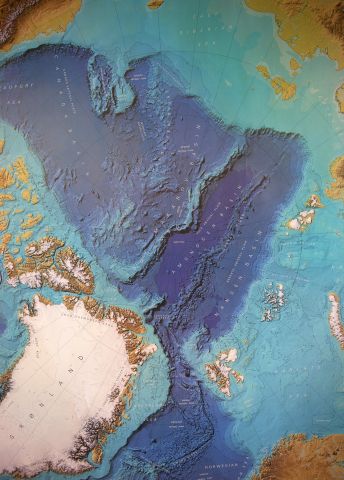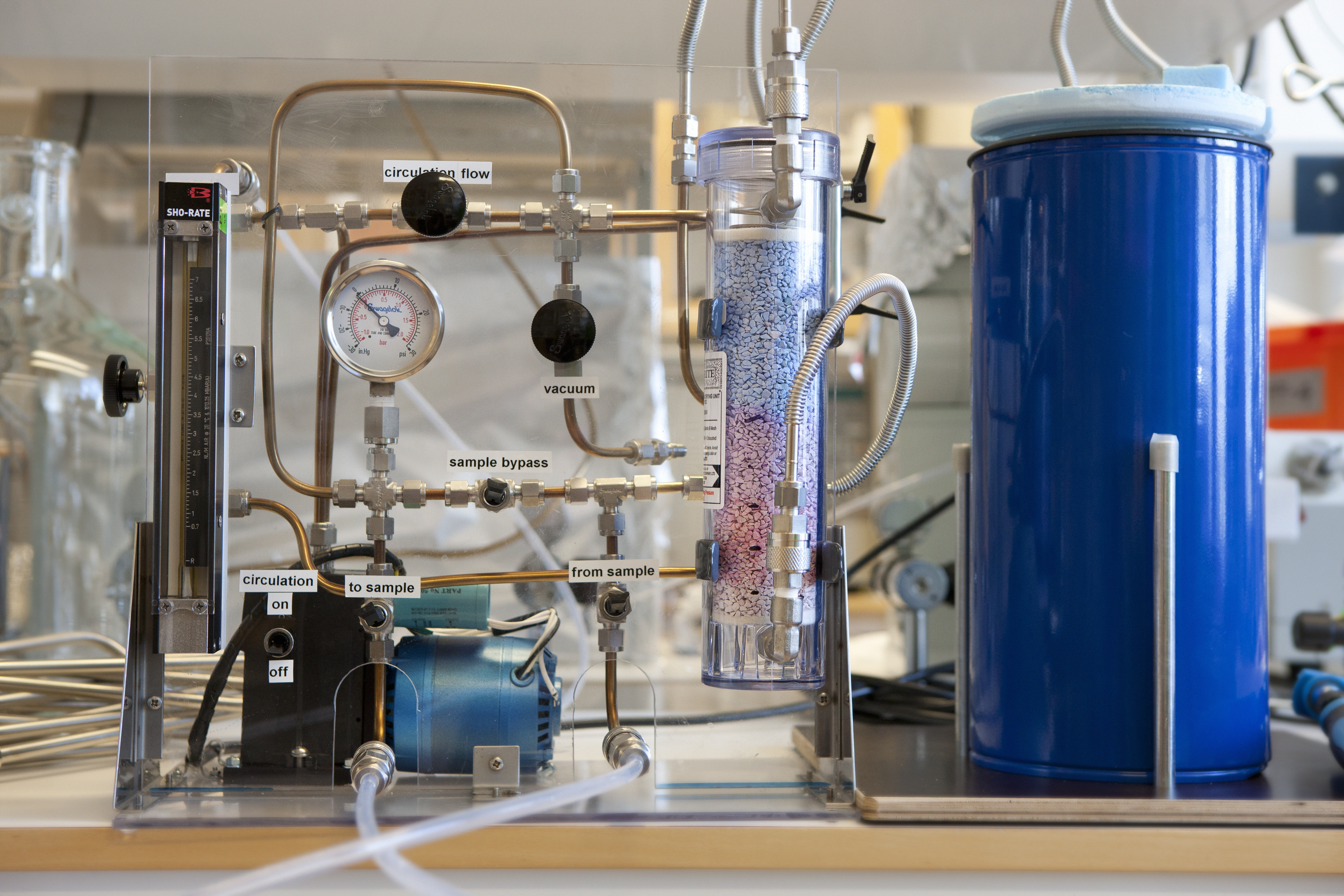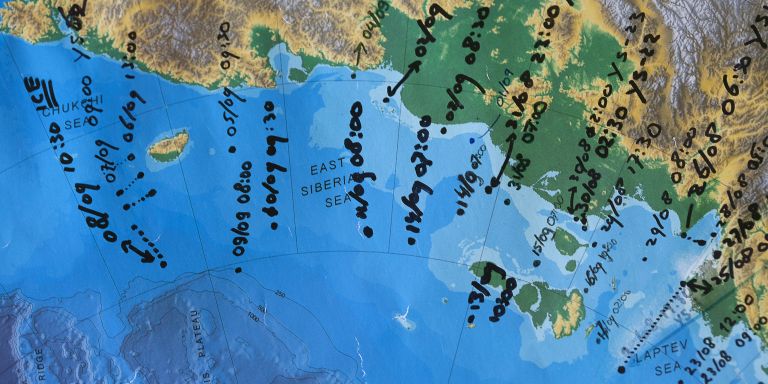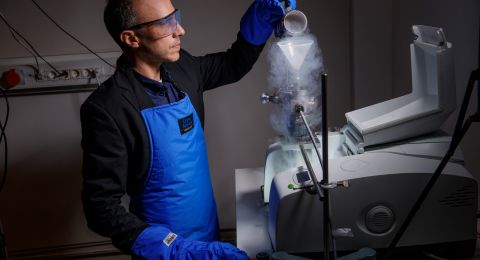
Project Grant 2011
The Swedish-Russian-US-Arctic Ocean Investigation of Climate-Cryosphere-Carbon Interactions
Principal investigator:
Örjan Gustafsson, professor of biogeochemistry
Co-investigators:
Stockholm University
Martin Jakobsson
Jan Backman
Volker Brüchert
Patrick Crill
Christoph Humborg
Johan Nilsson
Michael Tjernström
University of Gothenburg
Leif Anderson
Göran Björk
The project also includes researchers from Russia, USA and some European countries.
Institution:
Stockholm University
Grant in SEK:
45.8 million over five years
When the glaciers receded from the northern hemisphere more than 7,000 years ago, huge land areas in the Arctic were flooded with sea water. Rotting plant and animal remains on the bottoms of these underground seas have formed tremendous amounts of methane and other greenhouse gases through the centuries. These gases were previously assumed to be effectively isolated in the permafrost and in so-called gas hydrates. But in recent years it has been noticed that the permafrost is thawing and that coasts and underground seas are leaking greenhouse gases.
“It’s primarily natural processes that have been going on since the glaciers receded that lie behind the thawing of the permafrost. On the one hand, the sea water is warmer than the permafrost, and, on the other, geothermic heat is seeping up through fissures in the crust of the earth,” says Örjan Gustafsson, a professor of biogeochemistry at Stockholm University and one of the scientific directors of the project SWERUS-C3.
Gigantic lid
In other words, we can picture the permafrost as a gigantic lid that has closed in methane and other greenhouse gases since glacial times, but it has become more and more porous and hollow with time. What is unsettling today is how global warming caused by human activity, and which is at its strongest in Polar Regions, is coming together with the natural processes and hastening the thawing of the permafrost.
“Warm temperatures in the air and seas are causing the permafrost of the bottom sediment to thaw and the gas hydrates to become destabilized, and the erosion of the coastal permafrost is increasing. Taken together, this means that more and more methane is being released, winding up in the atmosphere. In the long run this will lead to so-called positive feedback, which will further aggravate global climate warming,” says Örjan Gustafsson.
90-day expedition
The East Siberian underground seas are an extension of the Siberian tundra that was flooded when the glaciers melted and sea level rose at the end of the ice age. It’s not only the world’s largest underground sea, but also the world’s shallowest underground sea, with an average depth of only 50 meters. This is where Örjan Gustafsson and his research colleagues will be concentrating their resources. A 90-day expedition is planned for the summer of 2014.
The area is difficult to access due to its geographical location and harsh climate, and major parts lie in Russian territorial waters. Nevertheless, Örjan Gustafsson– for several reasons – has high hopes for a successful expedition.
To start with, there is a history of previous successful Swedish-Russian research collaboration. In 2008, for example, he personally participated in a 45-day Swedish-Russian expedition in the area (International Siberian Shelf Study) aboard the Russian research vessel Jacob Smirnitskyi. During this expedition they found so-called methane chimneys in the area for the first time. The expedition’s studies also showed that over wide-ranging areas the methane concentrations in the seawater was elevated by a factor of 10–100 compared with normal levels, and the pattern indicated a source at the bottom of the sea.
Moreover, the summer 2014 expedition will be aboard the Swedish icebreaker Oden, which the journal Science calls the world’s foremost research vessel for the Arctic.
“Oden is unique and an important Swedish research infrastructure that provides us with a fantastic opportunity to succeed with what we plan to do,” says Örjan Gustafsson.

Major uncertainties
The fundamental research question for the project involves the great uncertainties surrounding how large the flow of methane is from the East Siberian underground seas today and how the flow might develop in the future. The key lies in understanding in what form the methane is stored in the sediment.
“But a lot of what we do is basic research, that is, curiosity-driven research that has its own fundamental human value. But our research also has direct usefulness for society, since the uncertainties about the future content of methane in the atmosphere are one of the great challenges for climate models and thereby for our ability to predict how the climate will develop in the future,” says Örjan Gustafsson.
The research project combines many different technologies and many different competencies, including biogeochemistry, geophysics, geology, oceanography, and meteorology. The Swedish scientists come from ten different research groups at five departments at Stockholm University and University of Gothenburg. Furthermore, researchers will be joining them from Russia, the US, and some European countries. A total of some 100 enthusiastic scientists will be working assiduously for years toward a common goal.
“The grant fills an extremely important niche in Swedish research. It gives us an opportunity to use larger constellations in order to address larger questions. Incredibly important! A tremendous commitment!”
“We have an extraordinarily strong research team, and this is the first time such a broad and competent constellation of researchers are collaborating on such a well-defined and coherent research question. Sweden has long been strong in Arctic research, and this Swedish-led research project is truly a unique opportunity to make real advances in central issues facing today’s climate research,” Örjan Gustafsson concludes.
Text Anders Esselin
Translation Donald S. MacQueen
Photo Magnus Bergström




